TV News Programs as Campaign Logs
4th Report on the Coverage of the Elections by Selected TV Programs
| Editorial Note:
Up to the last week before the elections the TV news programs remained neutral but failed to provide the critical information that citizens need when casting their vote. |
THERE IS no noticeable difference in how television news programs covered the elections from March 21 to April 17, compared to the past three monitoring periods. Presidential candidates and their campaign activities remained the dominant subject of election-related news, with only one report on the party-list elections aired during the period.
The primetime news programs of the three biggest Manila-based TV networks (ABS-CBN 2’s TV Patrol and TV Patrol Weekend, GMA-7’s 24 Oras and 24 Oras Weekend, and TV5’s Aksyon) aired a total of 1,448 reports from March 21 to April 17. No news programs were recorded for March 24 to 26 (Holy Thursday to Black Saturday). (See Figure 1)

Figure 1. Total number of election-related reports
Out of the 1,448 reports, there were only 410 election-related reports, of which 76 were banner stories. Other election news reports were evenly distributed during the first and second halves of the news programs. (See Figure 2)
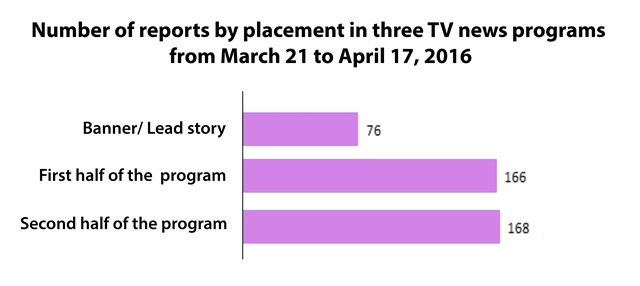
Figure 2. Placement of reports
Candidates as Subjects
Sixty-one (61) percent—or 251 out of 410—of election-related reports focused on the five presidential candidates, with Davao City Mayor Rodrigo Duterte leading the pack in terms of number of reports (123 reports).
Roxas was the second most covered presidential candidate, with 122 reports. Aside from his campaign sorties, the release of a “comics” campaign material on his alleged involvement in the Yolanda relief operations and evacuation was also the subject of TV news reports. (See Figure 3)
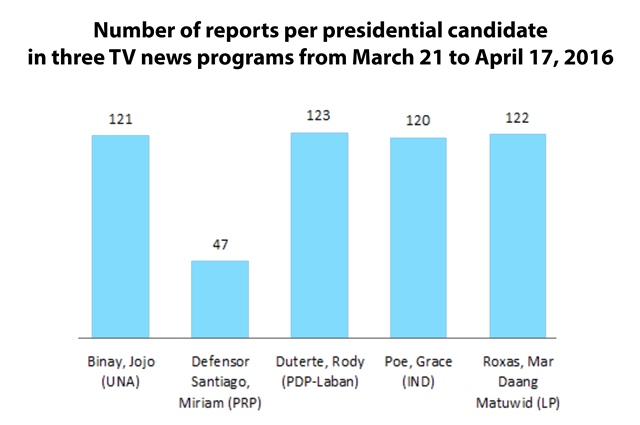
Figure 3. Reports on presidential candidates
Representative Leni Robredo was the most covered vice presidential candidate, with 55 reports. These were mostly on her campaign activities and ranking in the surveys. Other candidates for vice president were also covered for the same reasons. (See Figure 4)
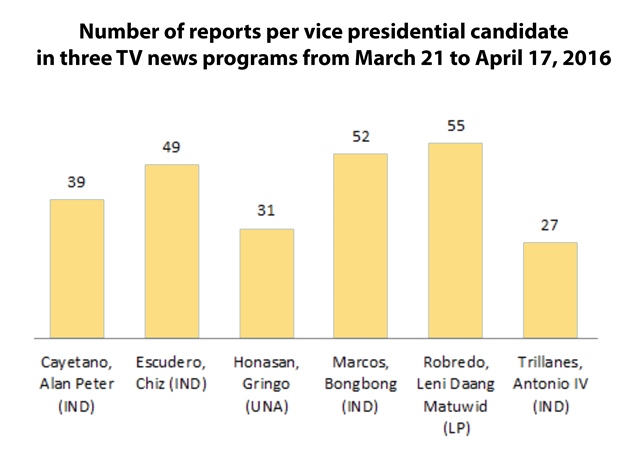
Figure 4. Reports on vice presidential candidates
Meanwhile, among the 50 senatorial candidates, Saranggani representative and boxing champion Manny Pacquiao dominated the news programs as his fight with Timothy Bradley neared and occurred (28 reports). Most of the senatorial candidates were only covered due to their ranking in the surveys.
Some senatorial candidates who were covered but not ranked among the top 12 candidates were interviewed by the news programs due to development issues and election/political controversies. For example, Walden Bello was the subject of two news reports because of his insistence that airing Pacquaio’s fight would violate election laws. (See Figure 5)
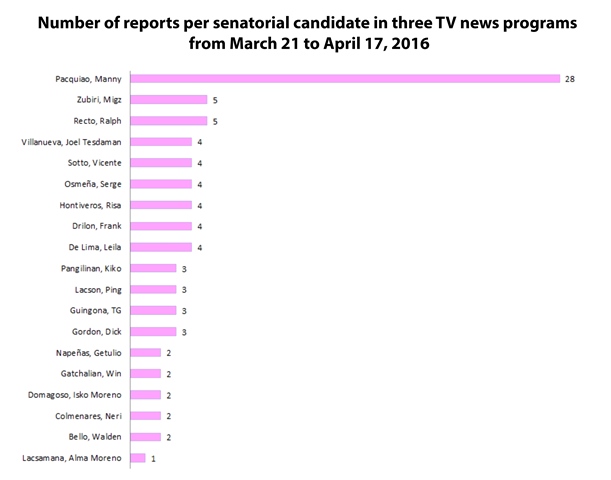
Figure 5. Reports on senatorial candidates
Only three party-list groups were covered during the monitoring period—Gabriela Partylist, Melchora and Manila Teachers. All the reports on the party-list groups were in TV Patrol. Gabriela’s statement on the passage of an ordinance against cat-calling was featured in an April 8 report by TV Patrol. TV Patrol also reported the removal of the campaign materials of the party-list groups Melchora and Manila Teachers.
Themes
The campaign trail of the candidates remained the dominant theme in election-related news (166 reports). The daily campaign schedules of the presidential candidates were reported. CMFR noted that monitored TV news programs also reported the fact that a candidate had no campaign rally or activity for a certain date (see report on Miriam Santiago). Focus on such activities was further boosted by the start of the campaign period for local electoral posts. (See Figure 6)
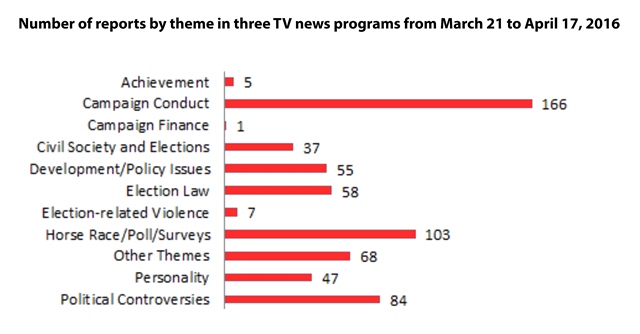
Figure 6. Themes of reports
The number of reports on who led in the surveys, or who dominated a certain province, or who will be supported by local candidates also increased during the four-week period (the Horse race: 103). CMFR noted an increase in local election reports, which mostly focused on feuds among opposing candidates.
Political controversies (84 reports) were also reported by the TV news programs. These included the fact-checking of what the candidates said during the Pilipinas Debates; the “comics” campaign material on Roxas’ involvement in the Yolanda rescue and relief operations; and the pending cases of some candidates before the Ombudsman.
Slant
More than 50 percent of election-related reports were neither positively nor negatively slanted for or against any candidate (188 reports). CMFR recorded 70 positively slanted reports and 93 negatively slanted reports. The slant or bias mostly arose from these news reports’ citing a single source or presenting only one side of an issue. However, as in previous monitoring periods, it should be noted that TV news programs usually air the opinions or the comments of the other party in a controversy in separate, but successive news reports. (See Figure 7)
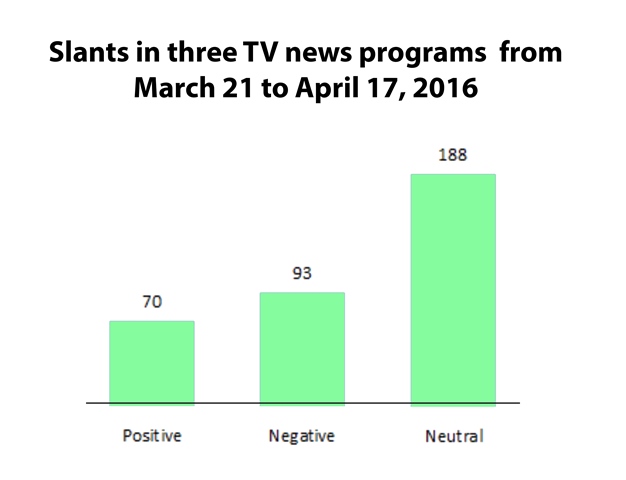
Figure 7. Slants in the reports





Leave a Reply